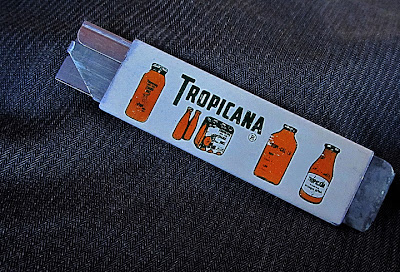I wasn’t sure what to expect when I open the box containing
the SOG Aegis. I like the new pillbox
style container, but the real importance is what’s in the box.
The company SOG was started in 1986 in California by Spence Frazer. Frazer, who didn’t have direct military
experience, was inspired by a the SOG knife carried in Vietnam . This knife fired his imagination and
following its re-creation, he built a top-end knife company.
What about the original knife that inspired him? We can thank Wikipedia for the background.
It was Vietnam . Highly trained men slipped behind enemy and
neutral lines on dangerous and often one-way missions. They were given a code name that wouldn’t say
anything: Studies and Observations Group (SOG).
Kind of sounds like a group of professors in some college think
tank. Of course now we know how
misleading that was.
They needed a knife.
It’s hard to beat a knife for silence and up close interaction. It’s hard to beat a knife as a basic survival
tool.
Benjamin Baker, the Deputy Chief of the U.S.
Counterinsurgency Support Office (CISO) wanted a sterile knife that would give no
clue to the nationality of its owner. He
designed a knife with a blade pattern featuring a convex false edge similar to
the clip point of a Bowie knife. It’s
been long established in knife lore that stacked leather washers gave the best
grip when your hands got wet or bloody, so he added that. Finger groves were cut/molded into the leather
washer handle. The blade was made from
SKS-3 steel hardened to a Rockwell hardness of 55-57. We might consider that a bit low by today’s
standards, but Baker wanted a knife that would bend instead of break. A small sharpening stone was added to the
leather sheath. Lastly, the blade was blued to reduce sunlight glinting off the
steel and reduce rust.
The knives were made in Japan and issued. They are now quite a collector’s item.
That’s quite a bloodline for my little Aegis to live up to. Lets take a look at it.
 |
| It comes top up right hand out of the box. |
The knife is an assisted opener. The opening isn’t as explosive as I’m used
to, but there isn’t a tendency to jump out of my hand either. The 3.5 inch blade of AUS-8 steel
is hardened to Rc of
57-58. The blade is coated with a Ti-N which
reduces reflection and adds a “tacti-cool” look. The relatively high level of chromium gives
AUS-8 good rust resistance, but remember it’s just resistance, not proof.
The knife has a safety, which I tend to ignore. I carry my knives pressed against the pocket’s
back seam so the blade is pressed into
the knife. They seldom if ever open on
their own in my pocket.
The blade has a thumb stud on both sides which facilities
the tip-up carry. You can reverse the clip
for right and left side. The clip lets
the knife ride completely submerged in your pocket. This may create problems with local ordnances
about “concealed weapons.” I know if
you’re arrested, the nail clipper in your pocket will be written up as a
concealed weapon. Give it some thought
and be careful.
I don’t know if the SOG arc-lock is the strongest lock in
existence. There are a lot of claims
about lock strength in the knife market.
It really depends on how you run your test and how you define
strongest. Previous ownership of SOG
arc-lock knives make me trust it as much as I trust any locking folder.
The black zytel handle has a pattern of raised features to
increase the friction between the hand and handle. More importantly, it felt good in my hand.













